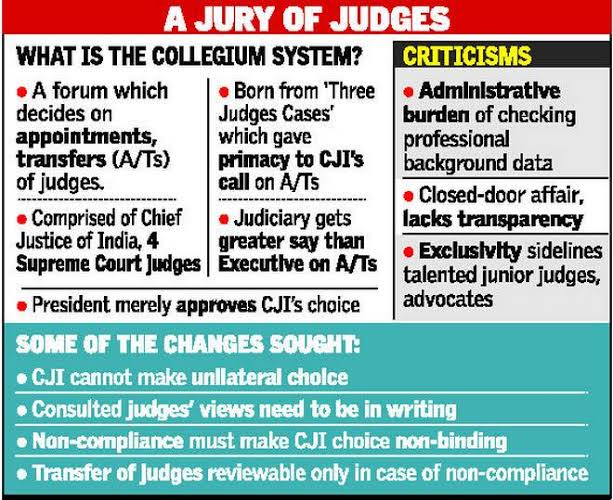Free Courses Sale ends Soon, Get It Now


Free Courses Sale ends Soon, Get It Now



Figure 1: No Copyright Infringement Intended
Constitutional Provisions:
In Practicality:
Supreme Court itself has accepted that collegium system needs to be reformed. With, more pressure and demand for transparency in working of judiciary, it is high time that court makes system more transparent, participative and representational.
© 2024 iasgyan. All right reserved